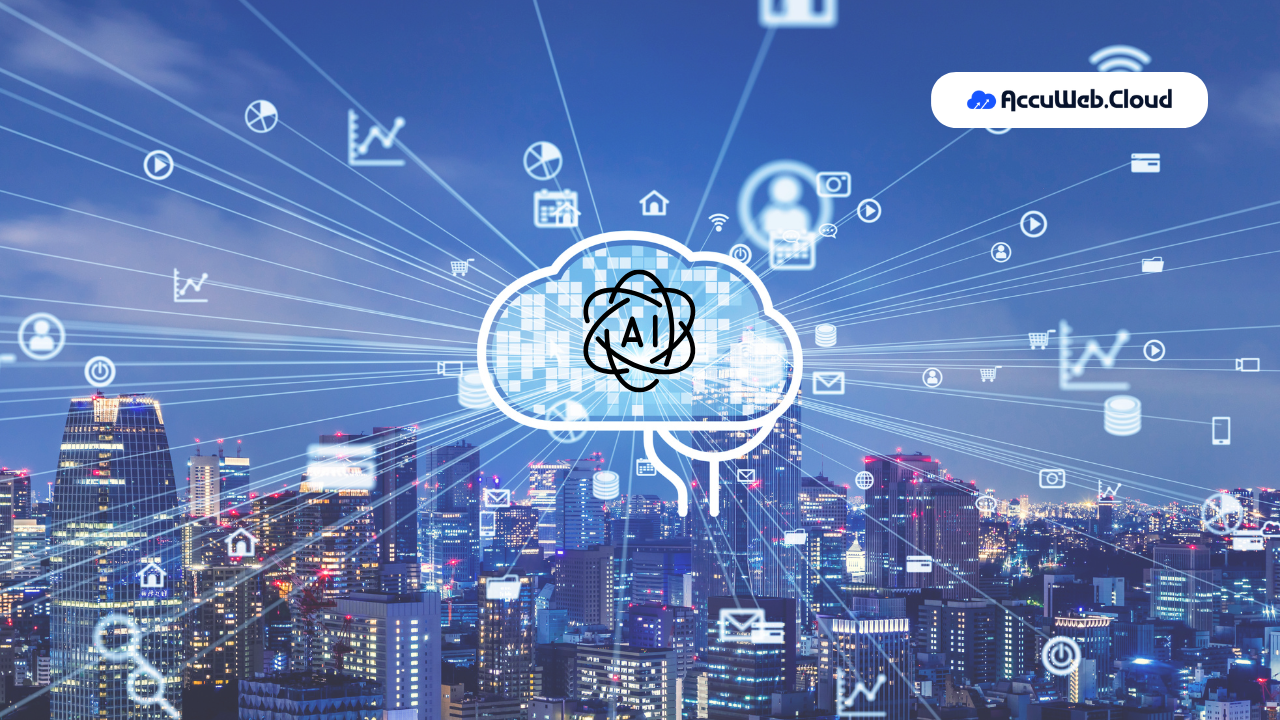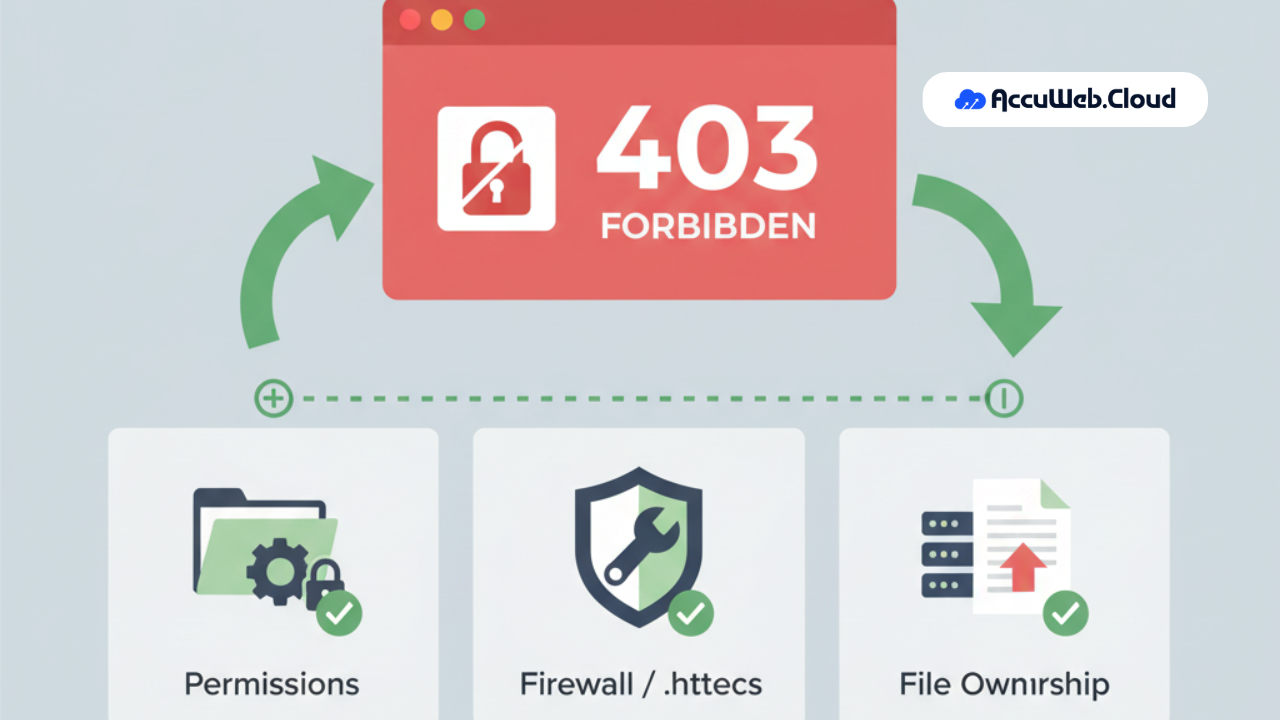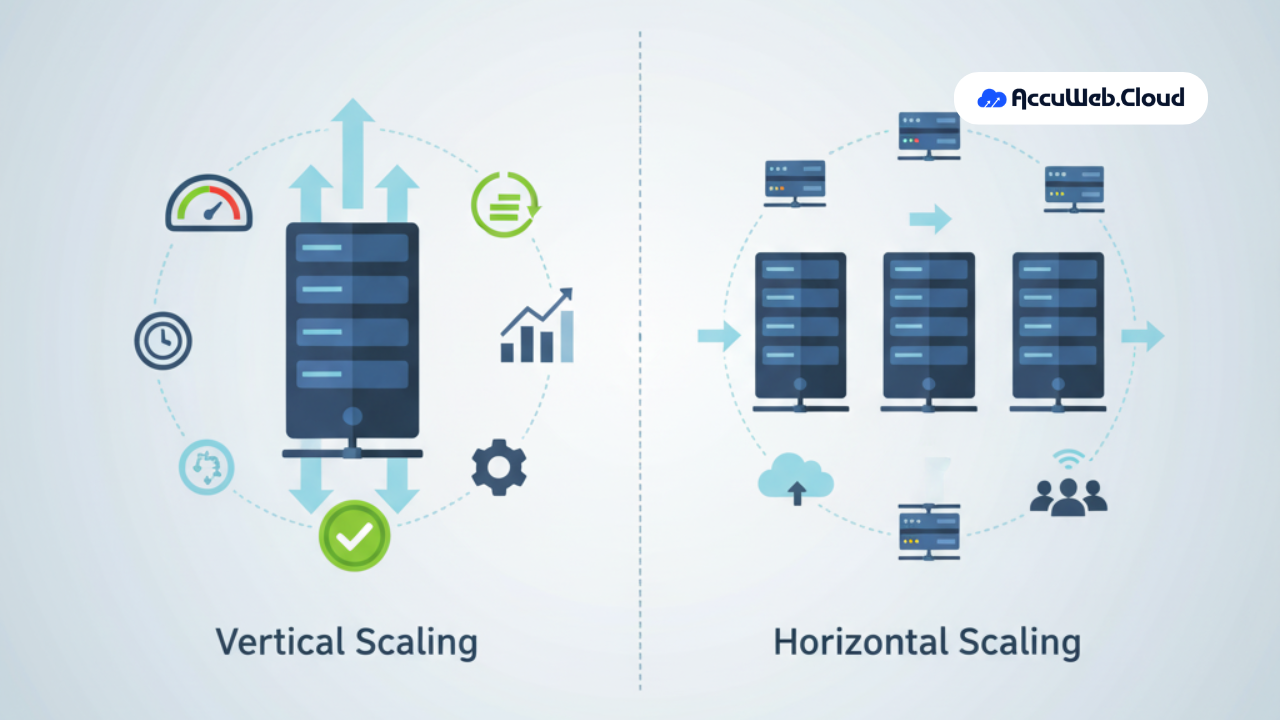AI-Powered Cloud Hosting: How Generative AI is Transforming Infrastructure Management?
Cloud platforms are evolving faster than ever, becoming more efficient, intelligent, and responsive. This transformation is powered by Generative AI, which works behind the scenes to optimize cloud infrastructure, enhance performance, and reduce operational complexity.
With AI-powered cloud hosting, your environment can:
- Automatically adjust resources based on real-time demand.
- Predict traffic surges and scale proactively to ensure smooth performance.
- Detects and mitigate potential security threats before they impact operations.
Imagine a cloud that understands your unique workloads, anticipates problems, and optimizes costs automatically. Generative AI turns your cloud from a reactive utility into a proactive, self-managing infrastructure that scales seamlessly as your business grows.
This is more than just automation, it’s intelligent cloud management, where AI acts as the central engine powering your applications, enhancing uptime, efficiency, and cost-effectiveness. Welcome to the next era of cloud hosting, where AI is not an add-on it is the core of your smart, adaptable, and resilient cloud ecosystem.
What Does Generative AI Bring to Your Cloud?
Think of generative AI as the hidden brain behind today’s cloud platforms—it does so much more than just create images or whip up code snippets. By continuously ingesting heaps of historical logs and live metrics, it gets to know your system’s rhythms, spots odd behaviors, and even jumps in to fix problems before you’ve had your morning coffee. Think of it as a vigilant co-pilot for your infrastructure—always on duty, endlessly curious, and unfailingly precise.
Here’s how it levels up your environment:
- Anticipate Demand: By spotting usage trends early, it spins up extra capacity before your site hits its busy hour.
- Fine-Tune Resources: No more guessing games—resources get dialed up or down exactly when you need them, cutting waste and keeping performance tight.
- Enhance Security: It peers into logs and network traffic in real time, flagging oddball behavior and shutting down threats before they spread.
With generative AI at the guidance, your cloud doesn’t just react—it thinks ahead.
1. Predictive Auto-Scaling
“Let’s scale up before the surge, not after.”
Traditional auto-scaling is reactive, waiting until CPU, memory, or traffic thresholds are crossed before adjusting. That means your system is already under stress when scaling begins.
Predictive Auto-Scaling, powered by AI, flips that on its head. It anticipates traffic spikes before they happen by analyzing:
- Historical usage data
- Seasonal traffic trends (like holidays or product launches)
- Real-time behavior patterns (API hits, login surges, cart activity)
AI models learn from your application’s usage curves and adapt over time. It’s like having a meteorologist who warns you of a storm before the first cloud appears.
Scenario: Black Friday Sale
Your e-commerce site is about to drop its biggest sale. Millions of shoppers are eyeing your flash deals. Traditionally, scaling would kick in after servers slow down or crash.
But with predictive scaling, your AI notices:
- A sudden spike in email link clicks
- Increased cart additions
- A regional traffic surge based on geo-IP
Ten minutes before chaos hits, it quietly:
- Adds compute instances
- Boosts database capacity
- Allocates more bandwidth
Result?
- Zero downtime
- Smooth user experience
- Happy customers—and even happier sales numbers
How It Works:
Predictive scaling systems often use:
- ARIMA or LSTM models for time-series forecasting
- Anomaly detection to spot unexpected usage patterns
- Integration with orchestration tools like Kubernetes or custom CI/CD pipelines
Why It Matters:
- Lightning-fast response under load
- Less stress on DevOps teams (no 3 AM wake-up calls!)
- Cost control—scale only when needed, not too early, not too late
Did You Know?
Netflix’s streaming service uses AI-driven predictive autoscaling to handle millions of concurrent viewers without a hitch, reducing disruptions even during peak times.
2. Intelligent Load Balancing
“Don’t just share the load anticipate it.”
Load balancers are the traffic cops of your cloud. They direct incoming user requests to the available servers. Traditional methods like round-robin or geo-based routing do a decent job but they lack context.
AI-powered load balancing brings context, foresight, and precision. It doesn’t just route requests—it analyzes live data to make real-time decisions based on:
- Server health (CPU, memory, disk I/O)
- Network latency and congestion
- User behavior patterns and request types
Scenario: Streaming Surge
You’re hosting a live concert stream. Viewers are logging in from all over the world, and traffic is peaking fast.
Your AI detects:
- A latency spike in one region
- Slight memory saturation on East Coast nodes
- A surge of mobile users needing adaptive streaming
It reacts instantly:
- Routes new traffic to underutilized West Coast servers
- Prioritizes adaptive video quality settings
- Avoids crashing any node due to overload
Result?
- Seamless experience for thousands of viewers
- Servers breathe easy
- No buffering = no rage-quits
How It Works:
- AI models monitor real-time telemetry
- Continuously score servers based on performance
- Route users to the best possible endpoint not just the closest
Why It Matters:
- Reduced response times (up to 40% faster!)
- Smarter global distribution
- Higher user satisfaction and retention
Did You Know?
AI-driven load balancing helped Twitch serve over 9.3 million concurrent viewers during a major gaming event without a single hiccup.
3. Smart Infrastructure Monitoring
“Don’t just watch your servers—understand them.”
Old-school monitoring tools? They check if your server is alive. This is the only thing they check. But by the time you get a red alert, your users are already hitting the refresh button in frustration.
AI-powered infrastructure monitoring isn’t just passive it’s observant. It studies behavior patterns across:
- System logs & event traces
- Performance metrics (CPU, memory, latency)
- User interactions & API responses
- Security anomalies
It learns what “normal” looks like for your setup—and alerts you when something’s off. Even better, it can often fix issues automatically before you ever know they existed.
Scenario: The Silent Slowdown
Your SaaS dashboard is responding… but slower than usual. No errors. No alerts. Just sluggish.
Your AI system notices:
- A 5% latency increase in DB queries
- A memory leak in a microservice
- A user drop-off spike in one region
While you’re sipping coffee, it quietly:
- Reboots the misbehaving service
- Redistributes traffic
- Sends you a report with actions already taken
Result?
- No downtime
- No angry support tickets
- Just smooth, uninterrupted service
How It Works:
- Natural Language Processing (NLP) to read log files
- Anomaly detection with unsupervised learning models
- Integration with automation tools (e.g., Terraform, Jenkins, PagerDuty)
Why It Matters:
- Catch subtle issues before they go critical
- Enable self-healing actions
- Get context-rich alerts, not cryptic logs
Did You Know?
Businesses using AI-driven monitoring see up to 60% less downtime, which translates into happier users and more revenue.
4. Proactive Security & Threat Detection
“Why fight fires when you can stop sparks?”
Traditional security says: “If something breaks, we’ll fix it.”
Generative AI security says: “Let’s make sure it never gets close.”
This isn’t your average antivirus scanner. AI-powered cloud security watches everything—from login attempts to API calls to file access patterns. It builds a baseline of “normal” behavior, then hunts anomalies in real time.
Think of it like an elite cyber-guard always awake, always learning, never missing a beat.
Scenario: Midnight Intrusion Attempt
It’s 3 AM. A botnet begins brute-forcing your admin login from thousands of IPs.
Your team’s asleep. But your AI?
It instantly notices:
- Repeated login attempts from unusual locations
- Access outside business hours
- Pattern-matching with known attack signatures
It takes action on its own:
- Blocks IPs
- Locks the target account
- Deploys a honeypot to trap the intruder
Result?
- No breach
- No data loss
- No headlines
How It Works:
- Real-time log analysis
- Behavioral biometrics (e.g., login rhythm, typing patterns)
- AI trained on billions of threat vectors and zero-day exploits
- Integration with firewall, IAM, and SIEM tools
Why It Matters:
- Identifies threats before damage happens
- Automates incident response
- Detects even unknown vulnerabilities (zero-days!)
Did You Know?
AI-powered security tools can spot threats up to 20x faster than human teams and mitigate them in seconds, not hours.
5. AI-Optimized Cost Management
“Why pay for what you don’t use?”
Cloud bills creeping up? It’s not always because you’re growing—it’s often because you’re overpaying for underused stuff.
That’s where Generative AI steps in as your budget-savvy co-pilot.
It doesn’t just show you your usage—it understands it. Then it gets to work:
- Recommends better-fit instance types
- Shuts down idle VMs and unused storage
- Suggests reserved or spot instances when they make sense
- Helps avoid overprovisioning
In short, it helps you spend smarter, not more.
Scenario: Cloud Bloat Attack
Your app’s popularity has exploded. You spin up more instances to keep up. Great, right?
…Until you realize two weeks later:
- Half your VMs are sitting idle
- You’re paying full price for burst-capacity machines you don’t need
- Your bill doubled for nothing
AI to the rescue:
It spots:
- Idle containers for > 6 hours
- Underutilized compute at 20%
- Daily usage spikes between 1–3 PM only
It auto-adjusts:
- Scales down during off-peak
- Gives you a breakdown of savings on your dashboard
Result?
- Performance stays sharp
- Costs dro
- The finance team loves you
How It Works:
- Machine learning cost prediction models
- Automated tagging and billing analysis
- Real-time alerts on spending anomalies
- Smart policy enforcement (auto-scale thresholds)
Why It Matters:
- Save 20–30% on average, often more
- Know exactly where your money goes
- Align cloud usage with actual business demand
Did You Know?
Some companies save thousands a month just by letting AI flag idle VMs and underutilized services they never even noticed.
6. AI-Assisted DevOps
“Ship faster. Break less. Sleep more.”
DevOps already moves fast. But with Generative AI, it moves smarter.
Think of it as your ultra-efficient teammate who never:
- Misses a deployment step
- Forgets to check for bugs
- Sleeps through a failed pipeline
AI doesn’t just automate tasks—it learns from your workflows, spots inefficiencies, and continuously improves your CI/CD pipeline.
Scenario: Sprint Week Pressure Cooker
You’re about to deploy a new version of your app. The deadline’s tight. You’ve got config files, Terraform scripts, YAML templates, monitoring hooks, and a deployment pipeline to tune.
AI says:
- “Here’s a clean, optimized Terraform script for your infra.”
- “That YAML file? It’s got a typo on line 42.”
- “This Dockerfile can be made 30% smaller.”
- “Also, 12% of your test cases are redundant—want me to clean that up?”
It even pre-runs simulations to predict deployment failures before they happen.
By the time you sip your coffee, it’s already staging the environment and running validation tests.
Result?
- Faster deployments
- Fewer rollbacks
- Happier devs
How It Works:
- NLP-powered code generation for Infrastructure-as-Code (IaC)
- Predictive failure detection in CI/CD pipelines
- Real-time optimization of build times and deployment orders
- Smart alerts and rollback suggestions
Why It Matters:
- 70% faster setup for new environments
- Cleaner, auto-corrected configs
- Intelligent suggestions = less grunt work
- Continuous feedback = better velocity, fewer bugs
Did You Know?
Some AI systems now write 80% of baseline CI/CD scripts and config files for platforms like Kubernetes, Terraform, and Ansible—leaving devs to focus on innovation, not boilerplate.
Real-World Example: AI in AccuWeb.Cloud (need to check with sir, once in publish)
At AccuWeb.Cloud, we’re revolutionizing cloud hosting with AI-powered insights. Here’s how we make your cloud experience smarter:
- Predict Traffic Surges: Whether it’s a big seasonal sale or a sudden flash promotion, our AI spots those spikes on the horizon and automatically brings extra resources online—so you never miss a beat.
- Automate Scaling: AI automatically adjusts your cloud’s capacity in real time, eliminating the need for manual intervention. It scales as needed to meet demand, seamlessly adapting to changes.
- Enhance Security: Our AI-driven security system detects and prevents threats before they escalate, ensuring your cloud assets remain protected with minimal human oversight.
At AccuWeb.Cloud, our vision is to create an intelligent cloud infrastructure that thinks, adapts, and grows with your business making cloud hosting smoother, safer, and more efficient.
People Also Ask (And You Should Too!)
Q) How is AI used in cloud hosting?
Think of AI in cloud hosting as your behind-the-scenes partner. It quietly scales up or down to meet demand, steers traffic where it’s needed, keeps an eye out for security threats, and even helps shave off extra costs. Generative AI takes it a step further by predicting what you’ll need, whipping up code snippets on the fly, and quietly fixing hiccups before you even notice.
Q) What are the benefits of AI-powered infrastructure management?
AI-powered infrastructure gives you a faster, more reliable cloud by:
- Speeding Up Response Times: It senses demand in real time and instantly allocates extra capacity when needed, so your applications stay snappy.
- Reducing Downtime: By continuously monitoring system health, AI spots and resolves problems before they can cause an outage.
- Lowering Costs: It tracks resource usage and automatically scales services down saving you money without any manual effort.
- Strengthening Security: AI learns your normal traffic patterns to detect and block suspicious activity the moment it appears.
Q) Can AI improve cloud security?
Yes! AI and machine learning models can detect anomalies, block suspicious activities, and even simulate attacks to find vulnerabilities. Generative AI can enhance defense strategies in real time making cloud environments more secure than ever.
Q) Does AI help reduce cloud costs?
Absolutely. AI analyzes usage trends to recommend better resource allocation, shut down idle VMs, and prevent waste. Companies leveraging AI for cloud cost optimization often see savings of 20–30% or more.
Q) What is self-healing infrastructure in cloud hosting?
Self-healing infrastructure refers to AI-powered systems that detect, diagnose, and resolve issues automatically without human intervention. If a service crashes or a VM becomes unstable, the system can reroute traffic, restart services, or spin up new instances on its own.
Q) What is AI-powered cloud hosting?
AI-powered cloud hosting uses Generative AI and machine learning algorithms to automatically manage cloud resources, optimize performance, predict workloads, and improve security, making cloud infrastructure smarter and more efficient.
Q) How does Generative AI improve cloud infrastructure management?
Generative AI can anticipate traffic spikes, adjust server resources in real-time, detect potential threats, and optimize costs, reducing downtime and operational overhead for businesses.
Q) Can AI-powered cloud hosting save costs?
Yes. By proactively scaling resources and predicting demand, AI reduces wasted resources, improves utilization, and helps businesses trim operational costs without sacrificing performance.
Q) Is AI-powered cloud hosting suitable for startups and SMBs?
Absolutely. Startups and small businesses can benefit from automated cloud management, faster scaling, and predictive resource allocation without needing in-house IT teams or extensive infrastructure knowledge.
Q) How does AI-powered cloud hosting help with application performance?
AI optimizes workloads by distributing traffic efficiently, managing CPU and memory allocation dynamically, and reducing latency, ensuring applications run smoothly under varying demand.
Q) Can Generative AI predict future cloud usage trends?
Yes. AI analyzes historical data and usage patterns to forecast traffic trends, resource requirements, and potential bottlenecks, helping businesses plan infrastructure proactively.

Jilesh Patadiya, the visionary Founder and Chief Technology Officer (CTO) behind AccuWeb.Cloud. Founder & CTO at AccuWebHosting.com. He shares his web hosting insights on the AccuWeb.Cloud blog. He mostly writes on the latest web hosting trends, WordPress, storage technologies, and Windows and Linux hosting platforms.









